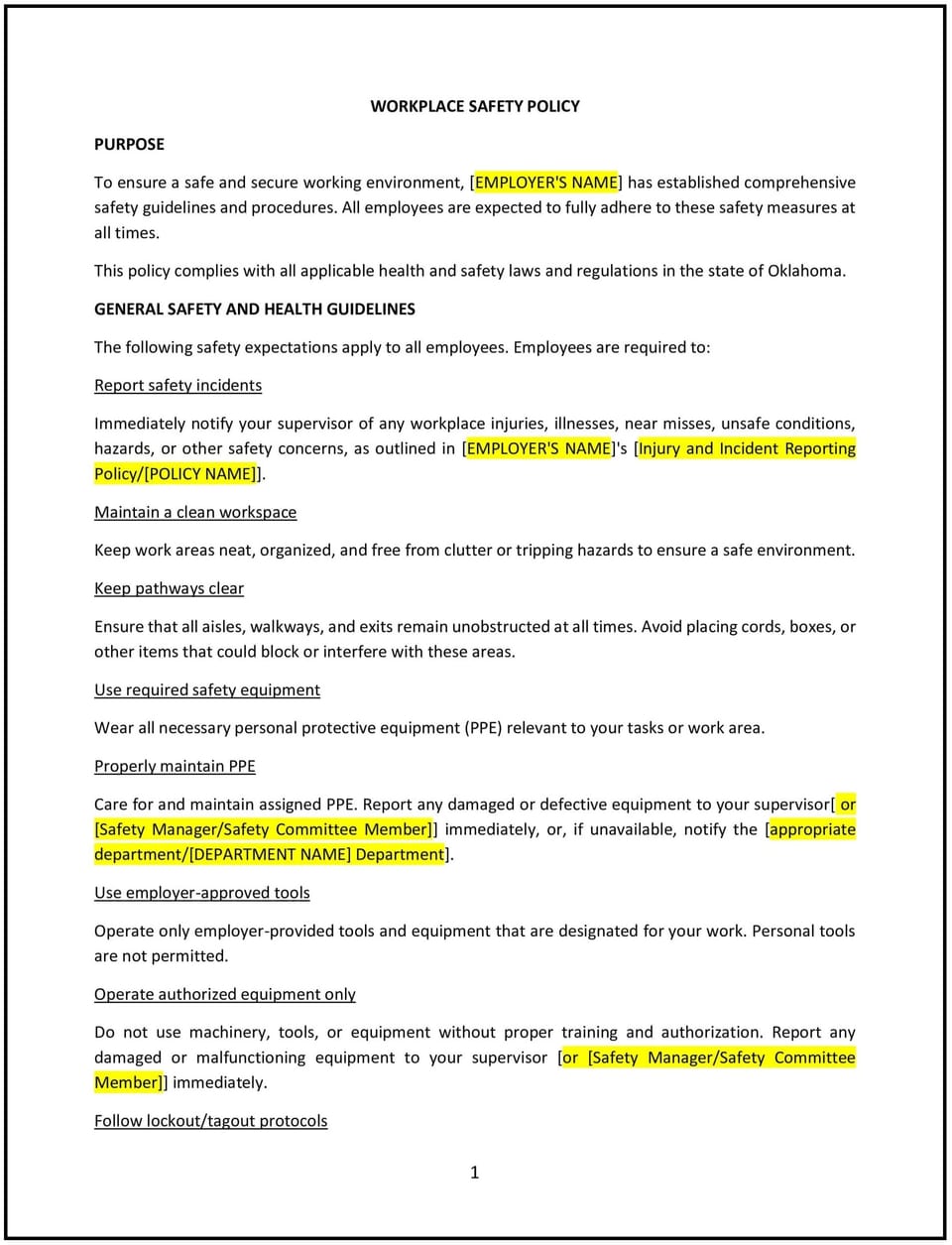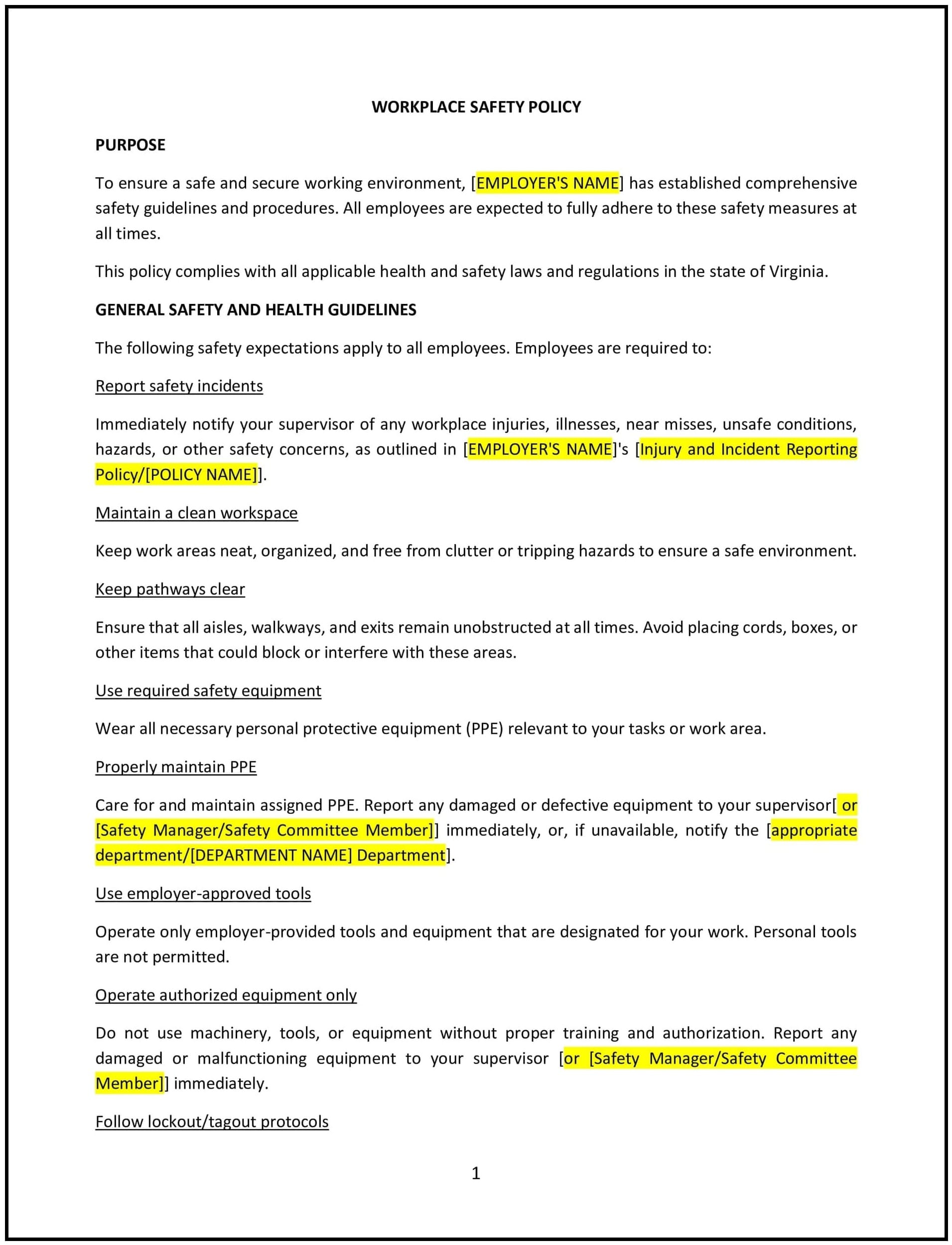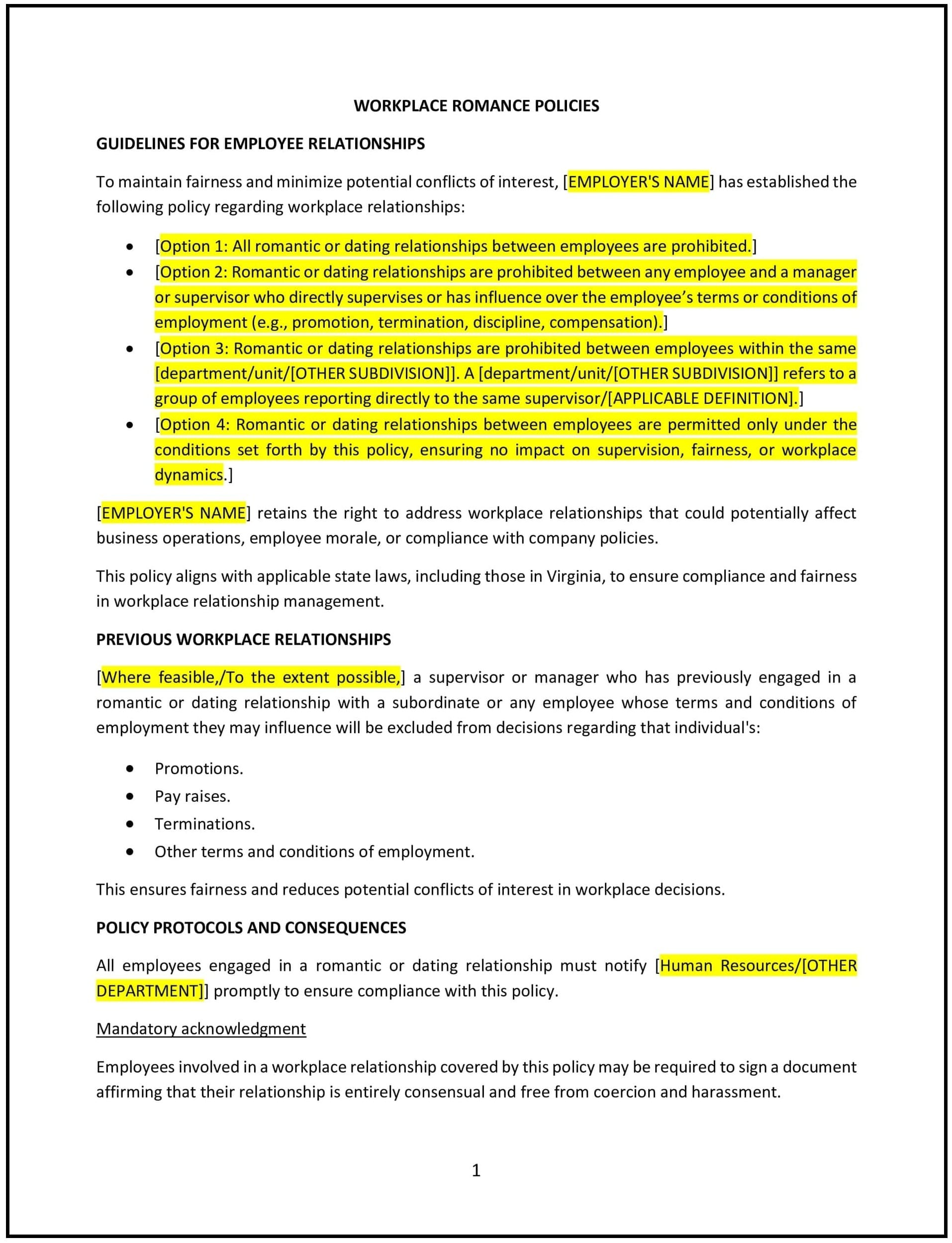Workplace safety policy (Oklahoma): Free template

Workplace safety policy (Oklahoma)
This workplace safety policy is designed to help Oklahoma businesses establish clear guidelines for maintaining a safe and healthy work environment. The policy outlines safety responsibilities, hazard prevention measures, and reporting procedures to minimize workplace accidents and injuries.
By implementing this policy, businesses can reduce workplace risks, enhance employee well-being, and promote compliance with applicable safety regulations.
How to use this workplace safety policy (Oklahoma)
- Define safety responsibilities: Assign roles for employees, supervisors, and safety officers in maintaining a safe workplace.
- Identify workplace hazards: Outline procedures for identifying and mitigating risks related to equipment, chemicals, and workspaces.
- Establish emergency protocols: Provide guidance on fire safety, medical emergencies, and evacuation procedures.
- Require proper safety training: Ensure employees receive regular training on workplace safety standards.
- Set reporting procedures: Require employees to report unsafe conditions, near-miss incidents, or workplace injuries promptly.
- Enforce use of protective equipment: Specify when personal protective equipment (PPE) is required.
- Review regularly: Update the policy to reflect changes in workplace safety regulations and best practices.
Benefits of using this workplace safety policy (Oklahoma)
Implementing this policy provides several advantages for Oklahoma businesses:
- Reduces workplace accidents: Promotes proactive hazard identification and risk prevention.
- Enhances regulatory compliance: Helps businesses align with Oklahoma occupational safety laws.
- Improves employee morale: Demonstrates a commitment to workplace health and safety.
- Reduces liability risks: Provides clear safety protocols to protect the business from legal claims.
- Reflects Oklahoma-specific workplace considerations: Addresses state-specific safety requirements and industry standards.
Tips for using this workplace safety policy (Oklahoma)
- Conduct regular safety audits: Assess workplace hazards and implement necessary safety measures.
- Train employees on safety protocols: Provide ongoing education on accident prevention and emergency response.
- Encourage employee reporting: Create a culture where employees feel comfortable reporting safety concerns.
- Maintain proper documentation: Keep records of safety inspections, training sessions, and incident reports.
- Adjust as needed: Update policies based on regulatory changes and workplace safety trends.
Q: What safety measures should businesses implement?
A: Businesses should establish hazard prevention procedures, emergency response plans, and employee safety training programs.
Q: How should workplace injuries be reported?
A: Businesses should require employees to report injuries immediately to supervisors or designated safety personnel.
Q: Are businesses required to provide safety training?
A: Yes, businesses should conduct regular training sessions to ensure employees understand workplace safety procedures.
Q: What personal protective equipment (PPE) is required?
A: Businesses should specify PPE requirements based on job roles, such as gloves, helmets, or respiratory protection.
Q: How can businesses improve workplace safety culture?
A: Businesses should encourage proactive safety reporting, provide regular training, and enforce consistent safety policies.
Q: How often should this policy be reviewed?
A: The policy should be reviewed annually or as needed to align with Oklahoma safety regulations and workplace changes.
This article contains general legal information and does not contain legal advice. Cobrief is not a law firm or a substitute for an attorney or law firm. The law is complex and changes often. For legal advice, please ask a lawyer.


